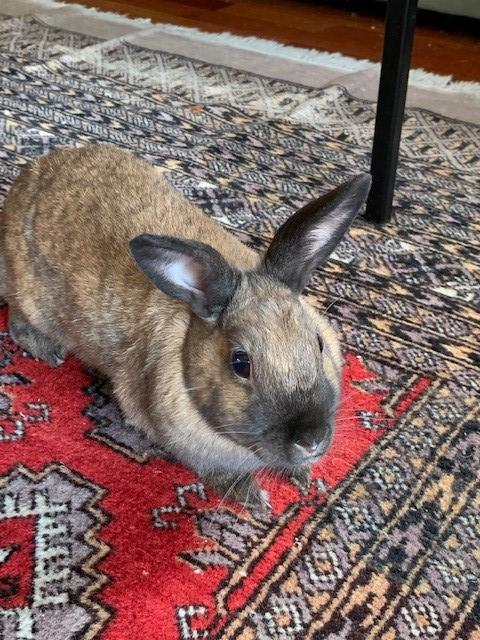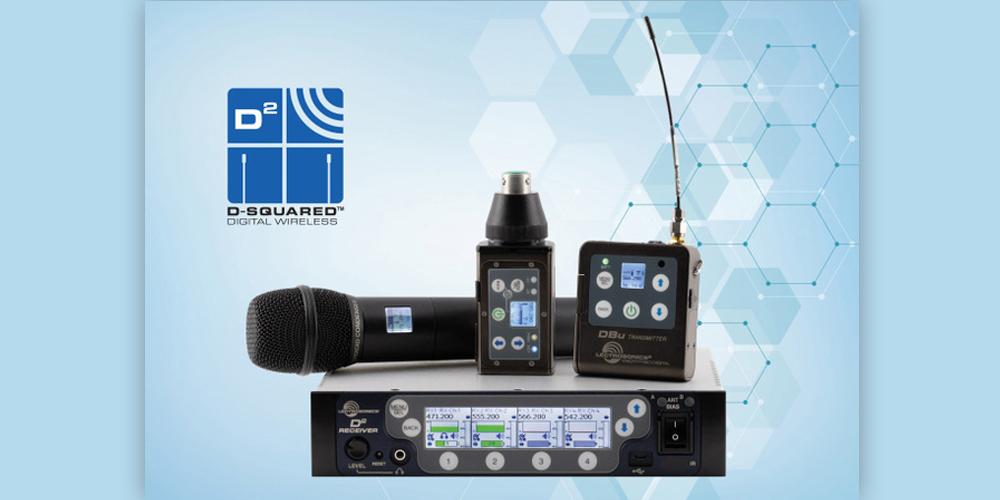-
Posts
492 -
Joined
-
Last visited
-
Days Won
27
Content Type
Forums
Gallery
Store
Everything posted by karlw
-
In addition to Larry's recommendations, I will suggest looking at some band filtering and possibly attenuation. The ALP690 antenna offers both. With your ALP620s and short cables, you are likely pulling in more RF than you really need, which raises the noise floor and can increase intermods in the receiver. By putting a bandpass filter at "6" on the antennas (470-608) and then bringing down the gain by say 3dB (set the gain to -3), you will see your noise floor go down and also you'll reduce the possibility of strong out-of-band signals desensitizing your receivers.
- 33 replies
-
Hi Jon, did you purchase this kit new or used? What are the firmware versions and serial numbers, please?
-
Since our daughter is off to college, Jane and I have inherited two rabbits and a mouse - the mouse "Baby" passed away last week at the ripe old age of about 1.75 years... the rabbits - "Bert" is a California, and "Francis" is an American Sable. Super quiet, fairly clean, gentle animals. But they can be mischievous, too. Every once in a while, they'll figure out how to get out of the cage, and just hop around and check stuff out, hide under the bed, etc. Fortunately, they are not "chewers" so nothing gets damaged.
-
THS - if this was early enough in the "discovery process" (figuring out the cause) then yes, it's possible that the hardware fix had not yet been developed and thus there was no warranty work to correct it. But, you bring up a good point about the wiring - different lav mic wiring schemes show a lot of variation in this problem. And, you are correct that the "servo only" wiring schemes (figs 9, 10 and 11 on this page) do not exhibit the issue. Since the "universal" wiring allows wiring of transmitters that were made pre-2005, I would suggest to everyone to use the servo-only wiring unless you have older transmitters. Servo-only wiring is generally quieter overall as well. https://www.lectrosonics.com/Support/Microphone-Wiring/uhf-transmitter-5-pin-input-jack-wiring.html
-
Hi Chickaboom, One thing to test is to turn off remote response (RC off) in that transmitter and see if the whine goes away. Where to find that is in the Power button menu, Remote, Ignore. If so, then there are some hardware updates that need to be done on that unit. We can do those here at the Lectrosonics HQ - it would be considered an extended warranty issue.
-

Breaking into the business... How can I get my feet wet?
karlw replied to Alex T's topic in General Discussion
Alex, I did a series of "wireless side chats" earlier in the year to cover some of the most important concepts in wireless microphone use, including spectrum basics, band planning, frequency coordination, etc. so hopefully the series is useful to you for your background study: https://www.youtube.com/playlist?list=PLwnOnolFSN5K2-2QZOwzVq-0ZFYgoPXDH Knowledge of these fundamentals can really help get you out of a jam when the pressure is mounting, but even before that, you can head off a number of problems before they happen in the first place. And, have a plan B, and a plan C for EVERYTHING. Bring backup batteries, units, cables, memory cards, lav mics, etc. -
Careful frequency choice is your friend. Try to space the channels as far apart as possible within the band, using frequencies from FF as to avoid intermods. If you can position your G2 receivers on the outside of your bag to physically separate them from each other and the SRbs in the bag, that may help a little bit as well. If any of your transmitters have a low power setting, use that - although I think your G2 units are at about 30 mW (actual power 20 mW) and the SMDb units only offer a 50 mW setting. Make sure none of the talent packs have the antennas touching skin or damp undergarments so that the RF isn't totally absorbed.
-
Hi Jake, I've verified with our programmer that yes, you can mix and match connections via USB and Network on the same running Wireless Designer panel, and the connection lists feature support this as well. With that, yes, you can coordinate all connected devices.
-
https://www.lectrosonics.com/lectrosonics-introduces-the-dcr-8222-dual-channel-portable-digital-receiver.html
-
- 1
-

-
Mattias, I'm not sure what the issue could have been. Could it have been an SRb, which only has a 25.5 MHz tuning bandwidth? So in that case if ch. 1 is in the middle of the band, then Ch. 2 could only be tuned 12 or 13 MHz apart. But an SRc tunes across about 76 MHz. Other than that, I don't know what the issue could have been. Glad to hear you are still getting great results with those classic units!
-
Constantin, each of the two receiver channels each has two front ends "linked" in Vector Diversity, which is like Ratio Diversity on steroids. But you can link the two sides in Frequency Diversity, for those "absolutely must not fail under any circumstances" situations - it requires two lavs, two transmitters, and two frequencies. Then the 822 becomes 1 receiver on 2 frequencies.
-
Hi Mattias, as was answered above, the two channels within the 822 can tune independently across the entire available band - the A1B1 version covers 144 MHz, and the B1C1 version covers 155 MHz. But, I'm curious about your comment on the SRc - it also has two independent channels that can tune across the entire band - in that case, an A1 band, B1, band, etc. Or, about 75 Mhz. Hi Jake, it's not possible for WD to have a single saved connection list where a unit (or "frame") has both USB and Network connections. However, it would be easy enough to build and save two connection lists, one with that unit as a USB connection, and one with as a network connection. -Karl
-
BAB414, pricing will be available on Tuesday from any of our dealers. Cheers!
-
Day 1 was great - we had a lot of good info & excellent presentations from a wide variety of manufacturers. Day 2 is tomorrow (Friday, Oct. 2) with at completely new set of presentations and discussions. See you there! https://thesoundsummit.org/
-
Here's a direct link to the Sound Summit if anyone is interested: https://thesoundsummit.org/
-
Jumping in here - BAB414 - in this small of a package, it just wasn't practical to include Hybrid emulation modes, which would require FM receiver components in the hardware, along with the much larger code space requirements. The larger receivers like DSQD can do this, of course.
-
It's not much of a surprise at this point... but here are the details! Add this to our ever-expanding digital wireless ecosystem! https://www.lectrosonics.com/Digital-Wireless/product/dchr.html -Karl
- 1 reply
-
- 2
-

-
Hi Daniel, PDR firmware v2.12 was released in October, 2019 and does not cut off the headphone output while recording. Sincerely, -Karl
-
RIP, Mr. Bream. One of my favorite videos of him is where he talks to Stravinsky and plays the lute for him
-
Keep in mind that along with the 20 mW limit, to stay strictly legal while using those frequencies the units must not be *able to be* tuned anywhere else in the 614-692 Mhz area.
-
Hi Todd, Although both the DPR and the M2R use 8PSK digital modulation, the M2R is set up only to receive a stereo signal, and thus is not compatibile with the DPR (or the DBu & DHu). Currently, the only receivers compatible with these transmitters are the DSQD, DSQD/AES3 and the older DR (a modular system like the Venue 2). To add DPR compatibility to the M2R would require a separate firmware load (due to code space in the unit) which would be quite inconvenient for most users. Stay tuned for future receivers...
-
I think you will like the DPR sound, Constantin, but of course you must hear it for yourself. Yes, it is in our plan to come out with B1C1 variants of the digital products. Difficult to outline a time for all that - we just lost two months of momentum...
-
Introducing the DPR digital plug-on transmitter, and the DSQD/AES 4-channel digital receiver: https://www.lectrosonics.com/lectrosonics-introduces-the-dpr-digital-plug-on-transmitter-and-the-dsqd-aes-3-receiver.html
-
Let's just say that the above document is quite old...





